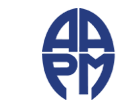| Question 1: Students that are positioned on being a lifelong learner have which quality? |
| Reference: | Mayhew, M. J., Wolniak, G. C., & Pascarella, E. T. (2008). How educational practices affect the development of life-long learning orientations in traditionally-aged undergraduate students. Research in Higher Education, 49,337-356. |
| Choice A: | Concerned about grades and board scores. |
| Choice B: | Are guided by internal motivation. |
| Choice C: | Dependent on guidance from the instructor. |
| Choice D: | Learns what they are told to learn. |
| Question 2: Instructors can promote lifelong habits in students by: |
| Reference: | How Learning Works: Seven Research-Based Principles for Smart Teaching. Susan A. Ambrose, Michael W. Bridges, Michele DiPietro, Marsha C. Lovett, Marie K. Norman, editors. San Francisco: Jossey-Bass. 2010. |
| Choice A: | Giving lectures dense in content without explicit application. |
| Choice B: | Promoting that the only way to learn is the instructors way. |
| Choice C: | Provide learning experiences that promote and encourage reflection. |
| Choice D: | Provide assignments that duplicate or recite class content. |
| Question 3: Which assignment example exemplifies helping our learners to develop skills of metacognition? |
| Reference: | National Research Council. How People Learn: Brain, Mind, Experience, and School. National Academy Press, 2000
|
| Choice A: | A computerized multiple-choice test where the student receives their percentage score and explanation of the incorrect answers at the end. |
| Choice B: | Assign students to read the chapter before the next lecture. |
| Choice C: | Task them with designing an experiment relating to the presented material and explaining how it relates to the concepts presented in class. |
| Choice D: | Memorize the half-lives of 10 radioisotopes. |
| Question 4: Which strategy BEST demonstrates how to foster a successful learning/understanding environment for our students? |
| Reference: | National Research Council. How People Learn: Brain, Mind, Experience, and School. National Academy Press, 2000 |
| Choice A: | Cover as many concepts in class as possible. |
| Choice B: | Regular pop quizzes to test how well the students remember and recall concepts. |
| Choice C: | Do not collect homework assignments, so students feel comfortable making mistakes. |
| Choice D: | Collect homework assignments or do problems in class, to regularly assess the students understanding of the material and provide feedback. |
| Question 5: Which of these strategies conduces to long term understanding and recall of new knowledge? |
| Reference: | Dunlosky, J. American Educator, 37(3), 12-21, Strengthening the student toolbox: Study strategies to boost learning, 2013.
|
| Choice A: | Highlighting important ideas and making conceptual maps with them. |
| Choice B: | Draw diagrams using colors and figures. |
| Choice C: | Asking questions when reading of the material and mixing different subject areas in each study session. |
| Choice D: | Use mnemonics to remember concepts and mass practice of problems to apply them. |
| Question 6: Why should instructors tell students about good studying techniques? |
| Reference: | Dunlosky, J. American Educator, 37(3), 12-21, Strengthening the student toolbox: Study strategies to boost learning, 2013.
|
| Choice A: | They will help make more efficient use of the time spent by the student with the material. |
| Choice B: | They are the student counterpart of the work done by the instructor in preparing the class. |
| Choice C: | These techniques will help students cement their knowledge for longer term goals, such as professional examinations. |
| Choice D: | Mass practice of problems develops automatic technical skills that are fundamental in using the material creatively in scientific and clinical settings. |
| Choice E: | All of the above. |
| Choice F: | All of the above EXCEPT D. |
